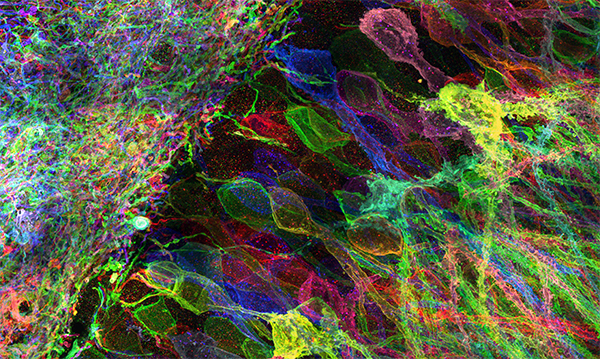Tools for mapping the molecular architecture and wiring of the brain

Biological systems such as brain circuits are complex structures made out of nanoscale building blocks such as proteins, RNAs, DNA, lipids, sugars, and other biomolecules, which take a great many forms, and are often organized with nanoscale precision. This presents a fundamental tension in biology - to understand a biological system like a brain circuit, you might need to map a large diversity of nanoscale building blocks, with great precision, across 3D spatial expanses. We are developing a suite of tools that enable the mapping of the location and identity of the molecular building blocks of biological systems such as the brain, aiming to map out the architecture of such systems with enough precision to understand how the structures of biological systems lead to function and dysfunction. One of the technologies we are developing, expansion microscopy (ExM), enables specimens to be imaged with nanoscale precision on ordinary microscopes, by physically expanding preserved biological systems (in contrast to all previous microscopies, that magnify images of specimens via lenses). We are working to improve expansion microscopy further, improving resolution and multiplexing capability, and are working, often in interdisciplinary collaborations, on a suite of new labeling and analysis techniques that exploit the biochemical freedom enabled by the expanded state. We are working, for example, on ways to perform in situ RNA and DNA sequencing in intact biological systems. We share all such tools as freely as possible, aiming to democratize multiplexed, nanoresolution imaging by making it as powerful and inexpensive as possible. We are also applying expansion microscopy to the scalable mapping of biological systems, such as brain circuits. Such brain circuit maps may be detailed enough someday to enable detailed computer simulations of brain functions, starting with small organisms such as C. elegans and zebrafish. Finally, we are extending and applying such tools to the early detection and understanding of complex diseases such as cancers and immune diseases, and to the analysis of aging.
Resources
Videos
TED Talk: Expansion Microscopy, 2016